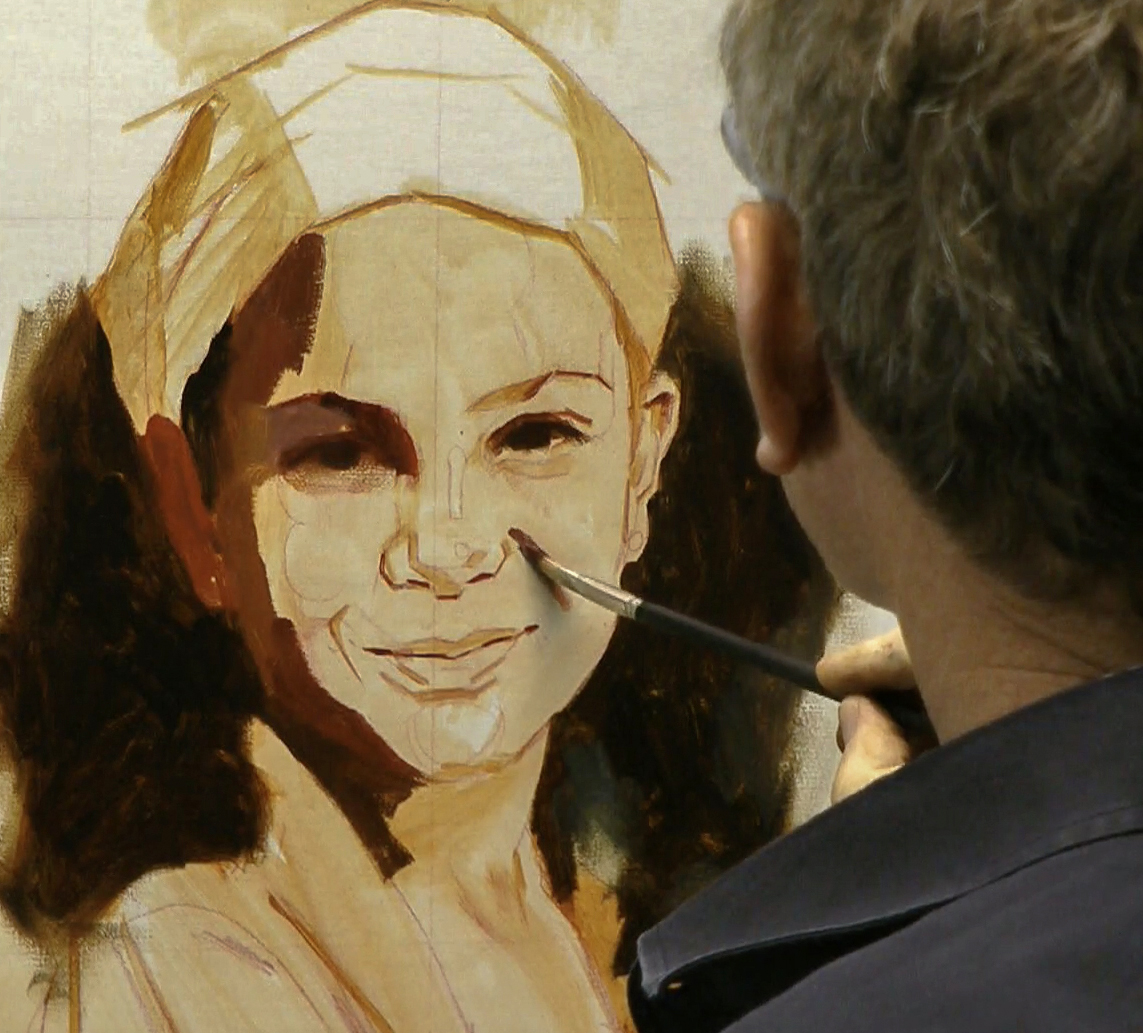
Don´t be afraid of the shadows.
In one way or another, in virtually all students I see a fear of making shadows in portrait painting. The restraint is so obvious and common that I wondered what might be the cause. I think it comes down to two.
- First the colours in the shadows are difficult to detect. Are they brown, gray-brown, is there black? What is shadow? The parts of the face where there is no light. Or almost no light, because there is often reflected light to see. If you cannot determine the colour in the shade exactly, think of the statement: “light parts are cool, shadows are warm, deep shadows are hot”. From this it follows that the shadows can easily be made a bit warmer than in reality. If the darks become too fiery it is not difficult to lower the intensity. (It is more difficult to arouse a dead colour to life than to knock down a fiery tone)
- Another point why people are diffident about shadows is that the canvas usually is light and shadow is dark. It seems that the touch you are going to put is many times too dark, comparing to that light canvas. Only when the parts are painted around that shade you can judge whether you are on the right track. Hence, for safety, many students start with the light areas with the result that the entire portrait has become far too light by the end.
Remember that the right tonal value is of greater importance than the accuracy of the hue of the lights. Value contrast goes beyond colour contrast. If the tonal value is good, the colour comes by itself.
See also Chiaroscuro.
